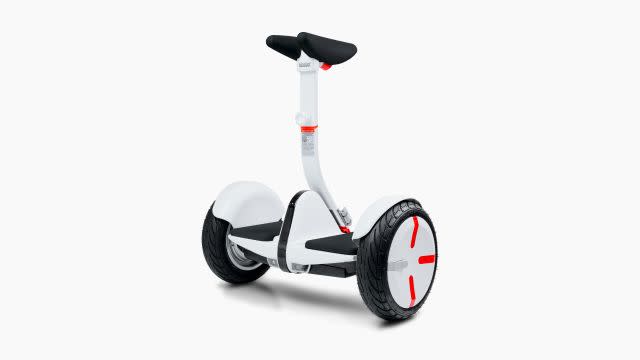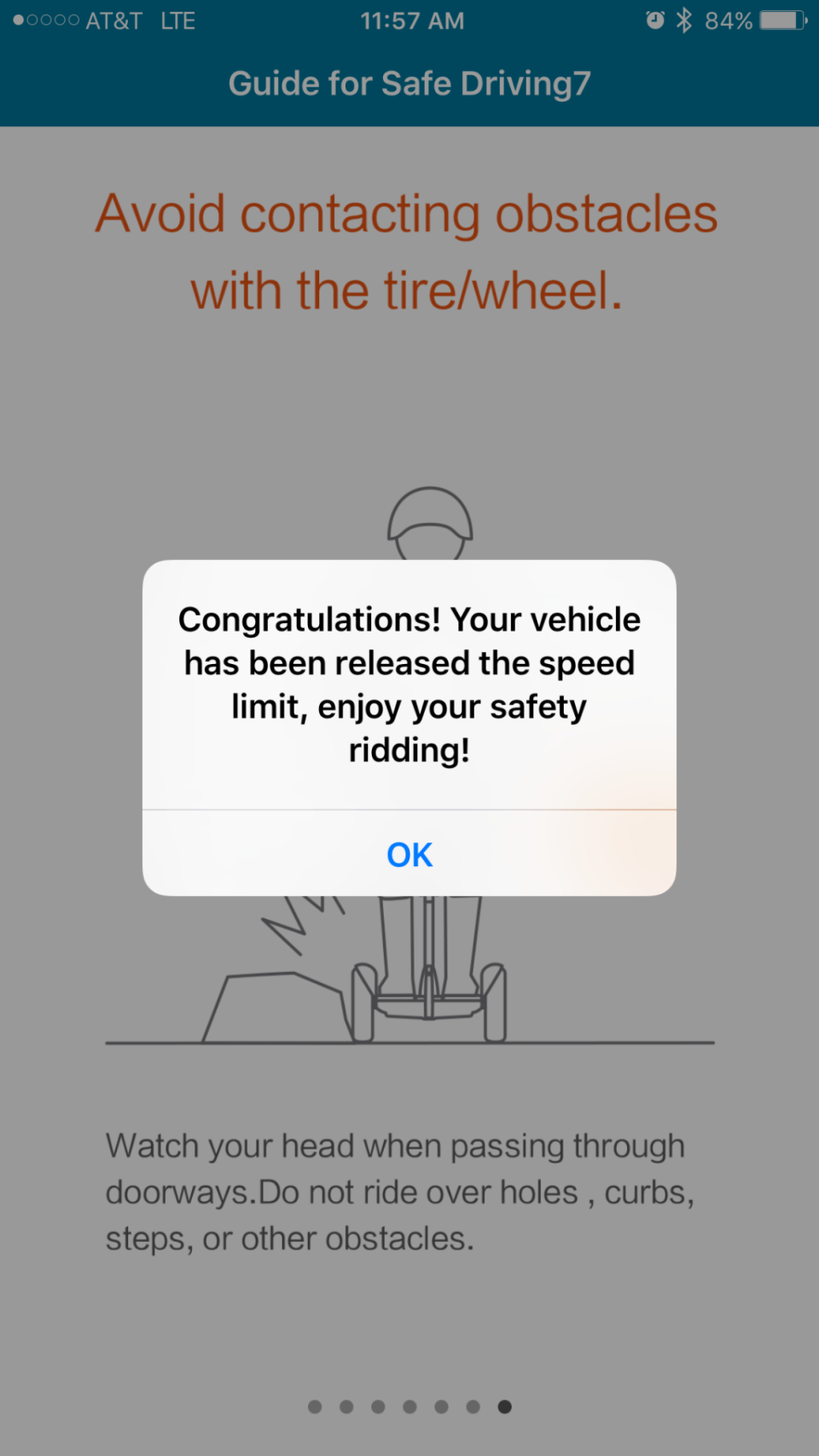Segway’s answer to the hoverboard still doesn’t hover, but it’s fun as hell

Last year was the year of the hoverboard—the self-balancing boards that in no way hovered really blew up, both literally and figuratively. As they became the gadget fad that every pop star, celebrity and suburban child latched onto, they also started causing a stir with authorities around the world, as many of the shoddily made knock-off boards caused fires and explosions around the world. They were banned on airlines, transit systems, and city roads.
But Segway, the company that brought us the original self-balancing travel toy, wants to change the perception of hoverboards as dangerous, faddish annoyances. The company was purchased last year by Chinese firm Ninebot, which used to make Segway-inspired knock-offs. It recently released the Segway miniPRO, a personal transport device that exists somewhere between the hoverboard of 2015, and the original Segway.
The miniPRO is also the first personal transport device that meets US government-mandated safety standards, developed this year by testing laboratory UL. It’s sturdier, better-built and more durable than most of last year’s hoverboards, but it remains to be seen whether it can reignite the hoverboard craze.
I’ve spent the better part of this week riding around on one, and while it probably doesn’t represent the future of transportation, it sure was fun.
What’s good
Fast. The miniPRO really zips around—it has a top speed of about 10 mph and it can take corners like a go-kart. Just make sure no one’s in your way.
Easy to maneuver. I managed to squeeze through some pretty tight spots on the miniPRO. It turns on a dime.
Relatively rugged. It’s not quite as intense as some of the more militaristic Segways, but it has decent shock absorption for small obstacles—as long as you’re not moving too quickly.
Easy to ride. After a few minutes of shaky, arm-flapping awkwardness, I got the hang of the miniPRO pretty quickly. The board’s companion app also offers tips on how to properly ride, including the suggestion that a friend wait nearby to catch you if you fall, in the beginning. Unlike a traditional hoverboard, where your feet control both velocity and direction, the miniPRO’s direction is controlled by a two-foot steering stick between your calves. The trade-off, of course, is that you have a weird stick thing between your legs.
Long battery life. The miniPRO has a range of about 25 km (about 15 miles), which, if your city allows it, could make for a fun commute. Otherwise, leave it in your office, and ride around all week before it needs another charge. Your coworkers may seem annoyed, but secretly, they’ll just be jealous.
(Relatively) hard to steal. The miniPro’s companion app allows riders to remotely lock and unlock their miniPROs. If someone tries to nab it, it starts beeping and convulsing. Would-be thieves won’t be able to ride off on it, and they also probably won’t be able to carry it away either, as it’s pretty heavy.
No more spontaneous combustion. As the first UL-certified hoverboard on the market, it’s not going to unexpectedly catch fire as you charge or ride it. It probably still won’t be legal to bring on a plane, however.
What’s not so good
The app. The companion app has some helpful information, like how fast you’re going and the board’s remaining range (though you probably shouldn’t be looking at that while riding.) You can also use it to remotely control the board, if you’re so lazy that you don’t want to walk to wherever you’ve left it. (It’s not nearly as easy to control as you’d expect this way, mind you.)

But the app has a lot of issues—it looks like it was designed for a mid-2000s Windows computer, and is riddled with confusing spelling errors. It also forces you to sit through an educational slideshow before you can ride the device, and you have to wait for 5 seconds on every slide before you can swipe to the next one. While educating riders isn’t the worst idea, the slideshow inexplicably reappears once you’ve completed 1 kilometer of riding, and the app forces you to read through the safety instructions again.
Not cheap. The miniPRO costs $1,000—far more than many of the hoverboards from last year. That being said, it’s less likely to fall apart or blow up.
Hurts your knees. The knee-height steering pole both looks and feels awkward. I’ve ridden it a lot this past week, and I’m getting a dull pain on the sides of my knees that hit the padded part of the pole—a very similar pain to the feeling of getting back on a bicycle after too much riding the day before.
Incessant beeping. It beeps far too much—it’s almost like an “everything’s OK alarm.” It beeps when you turn it on, when you turn it off, when you step on, when you step off, when you go too fast, when you back up too quickly, when you connect the app, when you remotely control it, when you don’t ride it for a few minutes, when you pick it up, and when you put it down. Chances are, if you touch it or its app, it’ll beep.
No short people. You have to be at least 4″ 3′ (1.3 m) to ride the miniPRO, so this won’t top the Christmas lists of many children. You also can’t weigh less than 80 lbs, or more than 220 lbs (36-100 kg).
It’s heavy. Unlike the average hoverboard, it’s not something you can pick up when you’re finished using it. It’s heavy, and the awkward extending arm built into the knee pole doesn’t really help much.
Should you get one?
Even with all the beeping, the confusing app, the heft of the price tag and the board itself, it’s still a hell of a lot of fun to ride, and it’s the first hoverboard-shaped object I’ve seriously considered getting. But I can’t ride it on the street in New York City, and if I keep zipping around colleagues at the office with it, I might find it at the bottom of the East River one of these days.
Much like an Apple Watch or an Amazon Echo, no one really needs one of these. But if you live somewhere relatively open, where personal transporters are legal, the miniPRO might be the hoverboard for you. Just make sure you can put up with all the beeps.

Sign up for the Quartz Daily Brief, our free daily newsletter with the world’s most important and interesting news.
More stories from Quartz:


